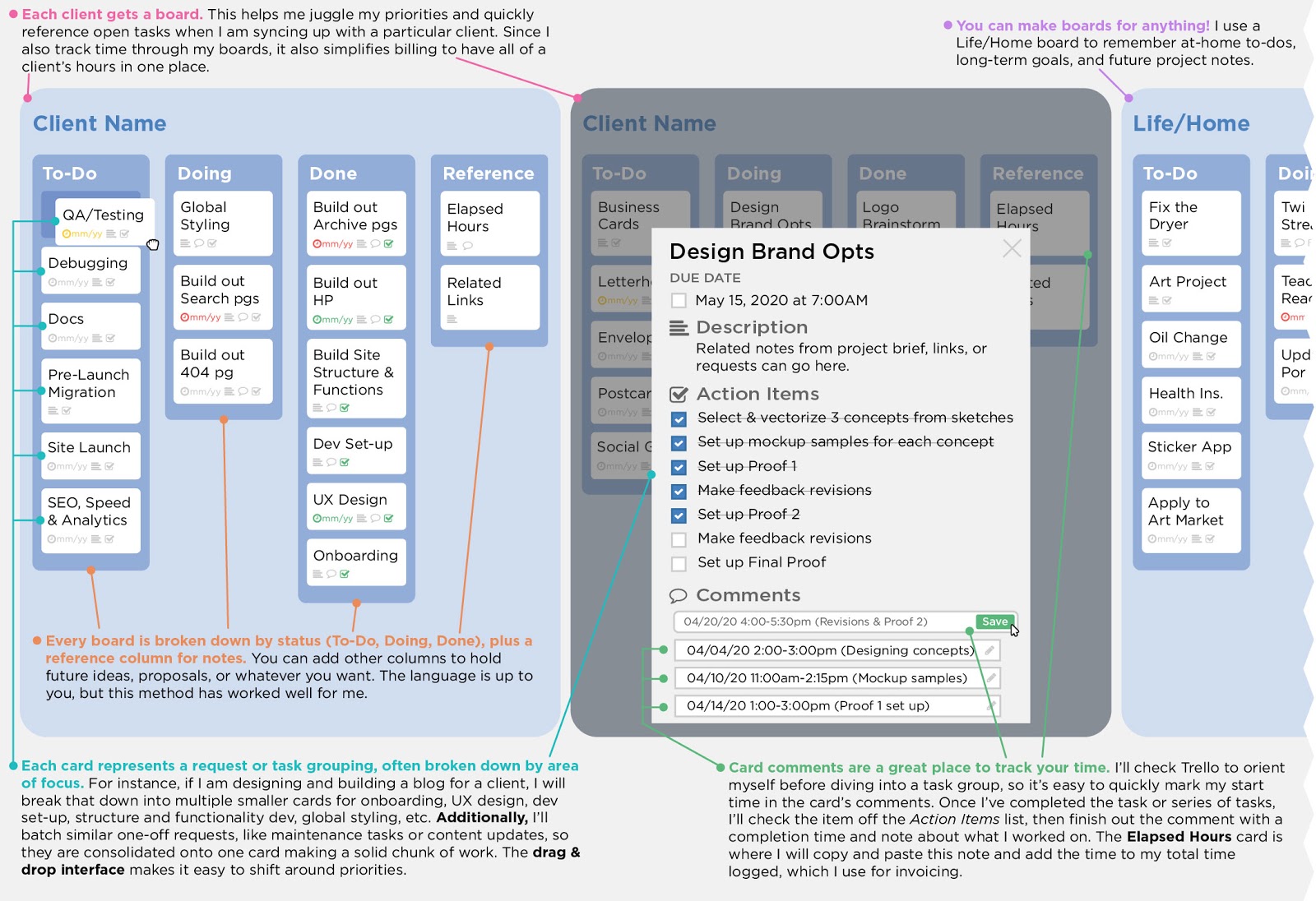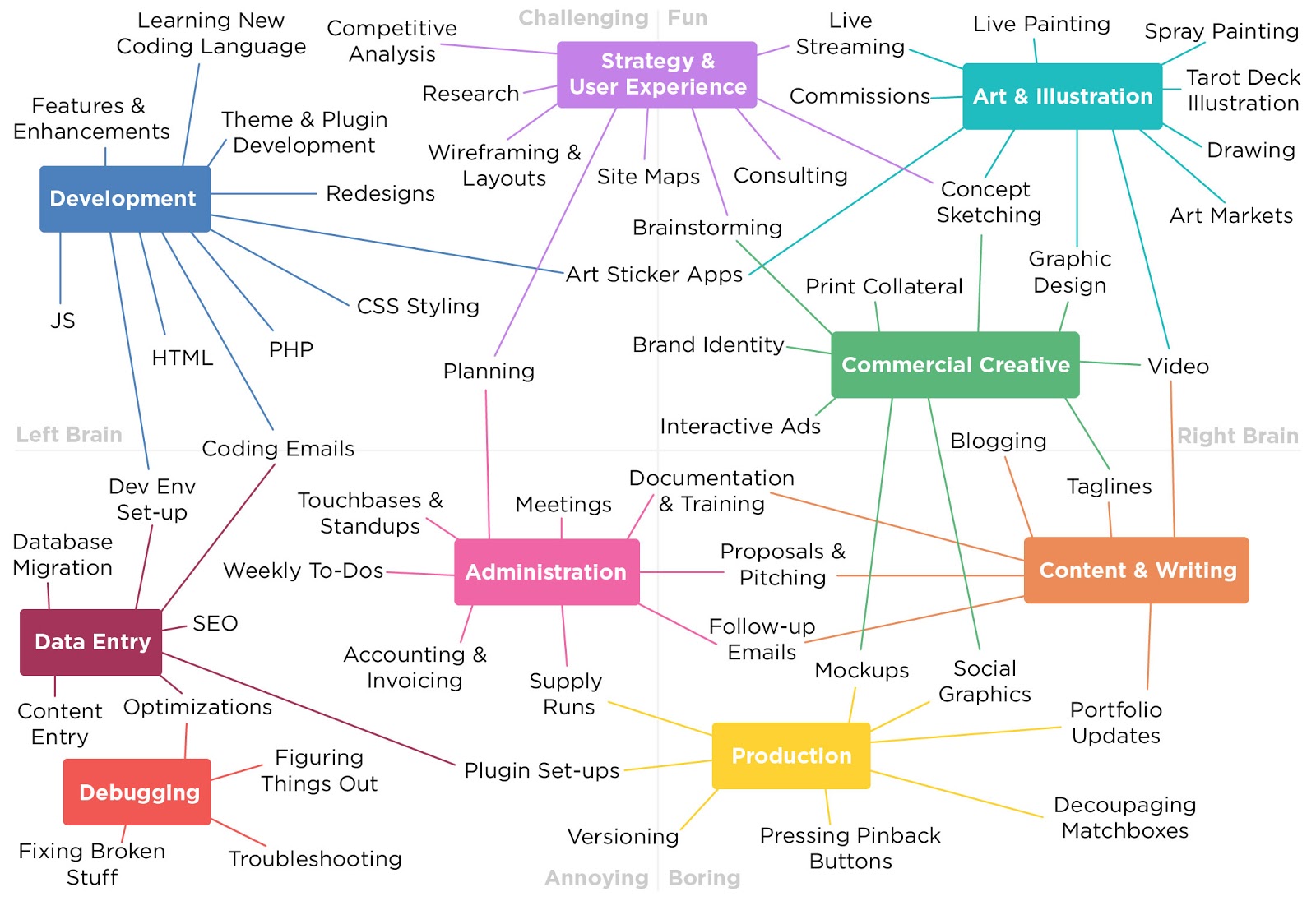Were you laid off or furloughed from your job recently? Are you feeling increased pressure to bring in more to support yourself or your family during this time of crisis? Maybe you’re just looking for more freedom to explore your passions?
Whether you’re looking for a side hustle to pad your income or chart a course for what direction you’d like to venture out of this darkness, I have a background in juggling multiple income streams to survive and support my happiness. Others may benefit from it, so I wanted to share some tools to my success.
First, Allow Time for Self-Reflection
Before diving into this discourse, I want to acknowledge that major career changes can be traumatic. Especially so, if you felt you’d reached your career end game or were already barely able to scrape by working three different service jobs, all of which are now closed.
Remember: It’s okay if you need time to process. It’s completely fine if you’re not ready to hit the ground running. It’s normal to feel overwhelmed and anxious and even hopeless. Be gentle with yourself and allow time for self-reflection. You can lay out a map ahead with your happiness in mind. When you’re ready to take your next steps forward, this information will still be here.
What brought me to my freelance career path?
Flexibility: Growing Through the Cracks
I’m no stranger to traumatic career upheavals. I graduated college during the 2008 recession, so finding stable footing was tough due to regular overhead reductions and multiple lay-offs. I freelanced off and on throughout. Later in life, I found brief stability working for a large retailer. But after surviving three rounds of layoffs, the company filed for bankruptcy and went out of business. That was three years ago, when I finally decided to take matters into my own hands and ventured back into freelance self-employment.
Since then, I’ve been able to support myself and my happiness by doing a broad mix of UX strategy, front-end development, creative design, small business consulting, art markets, illustration commissions, helping to run a local non-profit art space, and honestly, whatever comes my way that resonates with my background, skills, and future goals.
Diversification: Living a Renaissance Lifestyle
I had a creative writing professor in college who encouraged a Renaissance lifestyle: one dedicated to a creative reawakening. It was the idea that one should work whatever job they needed to make ends meet, but set aside at least an hour of free time to foster and support their creative passions.
His words always inspired me because I have long been a woman of too many interests. The idea of entertaining all of my interests, not just the single specialization that paid well, spoke to me deeply. I felt empowered knowing I’m in full control of the time I dedicate to learning, growing, and exploring in the fields of art, illustration, development, design, and the human experience. Inevitably, when it came to self-employment, I chose to offer services that nurtured all of these creative and communication outlets.
Practically speaking, how does one juggle multiple different businesses?
Solutions-Oriented Adaptability
All of the different types of work I do have one thing in common: I am solving puzzles. All day, every day, I am being presented with some kind of problem, gathering data, researching, asking questions, testing out different methods, and attempting to solve these problems. It doesn’t matter whether it is a website maintenance issue or a portrait commission request or a friend wanting advice on starting their own business, I am guiding people to their desired outcome.
When you focus on the similarities between the interests you have rather than the differences, it becomes easier to contemplate juggling a wider variety of tasks. Lean into where you feel you’d serve the most good and what you need will come to you. Explore what solutions bring you gratification and you’ll find areas to grow and adapt your hustle.
- What kind of puzzles do you get the most satisfaction from solving?
- What kind of issues do friends, family, colleagues and businesses rely on you most often to solve?
- Which problems do you feel the most knowledgeable about and confident in solving?
- In what ways have you adapted your problem-solving to different scenarios?
Efficiently Managing Projects and Time Together
Now that you’ve discovered some of the different types of drives you have, you’re likely wondering how someone actually manages a widely differing workload encompassing these multifaceted interests. Here’s my secret.
Organizing the Chaos
I’m a big fan of to-do lists, but when it came to my businesses a single to-do list was failing at keeping track of all the varying details, requests, and due dates. Wholly out of my element, I reached out to a project manager friend of mine and she told me about Trello.
Trello is a free, board-based list-making application, or what PMs call a Kanban board. Since I am a very visual thinker with a terrible memory, this method has worked very well for me in simply organizing next steps and breaking all my various projects into bite-sized chunks. The graphic below illustrates how I use this application to plan and prioritize my projects and tasks.

Combining time tracking and project management has a huge benefit of gaining a better understanding of exactly how long it takes you to do a task or group of tasks. You’ll be able to schedule your time out in a way that works for you. Your future time estimates can be more accurate and you’ll be able to confidently book your clients out further. It’s tough upfront, but as you gather more data, you’ll get better at making these predictions.
Mind Mapping Your Mind Shifts
We’ve chunked out our work into manageable portions, but how do we keep ourselves from getting whiplash switching between all these different services? How does someone actually jump from coding to illustration to strategy? Well, most of the time, you aren’t going to want to do that.
Not all areas of interest are one thing all the time, especially when you turn them into businesses. There is always cross pollination between tasks and even your top-tier favorite interest can have some boring moments.
Take a look at how you broke down your projects in the previous section. Are there any common themes with how you grouped your tasks? Mind mapping can help you visualize how you mentally organize your tasks. Here’s an example of how I think about all the various tasks I can do.

I organized mine by the left and right brain hemispheres and then by what I felt was challenging/fun or annoying/boring. You can divide it up in whatever way works best for you and how your brain compartmentalizes tasks.
Through this visualization exercise, I can start to make sense of what tasks are connected or lead into each other and which tasks bring me joy. For instance, I try to leave at least an hour at the end of my work day to wind down with some of those fun illustration tasks, like working on my tarot deck while live streaming. This is something I am always in the mood for and purposely fit time in for, because it is the soul of my Renaissance lifestyle and leaves me feeling calm and happy at the end of my day.
Schedule Blocking: Designated Days and Weekly To-Dos
Since we have a good understanding of how long tasks take and how our brains flow, it’ll be easier to set up some loose schedule blocking for your work week. Here are some tips from my experience with this:
- Designate specific days for specific tasks. I usually alternate between left brain and right brain activities because that is what works for me. Often, I’ll save the fun tasks for later in the day for a little boost of energy.
- Give yourself an admin day to plan out a weekly priority to-do list, send invoices, and touch base with clients. This keeps your clients happy, your bills paid, and your mind focused for the week ahead.
- Leave 15-30 minutes between work blocks for quick responses, tasks, or breaks. If it takes less than five minutes, do it now.
- Keep in mind that you will likely need to re-evaluate your schedule as you learn more about what works for you. That is normal!
- Don’t forget to block time for chores, personal care, and hobbies. Self-care is essential.
Know Your Worth
Now that you have some idea of timing, enjoyment, and scheduling for all the various services you provide, you can start to really understand your worth and get better at defining rate groups. Setting the correct rates can seem difficult or mystifying, especially when juggling multiple services. Luckily, a lot of information about industry rate averages and tips for setting your rates are a search away, and even right here on this blog.
But I also want to talk about knowing your worth from a confidence perspective. Parts of your mind are going to tell you that you are being too over-confident and you can’t really do all these things. That is a very normal feeling that we all experience called imposter syndrome, and you shouldn’t listen to it. No two people will come up with the same mix of services and creative interests. Your offerings came directly from your mind’s passion and experiences. They are authentically you.
Don’t be afraid to reach out to people about ideas you may have and promote yourself right now. If this is something you really want, you have to advocate for yourself.
If you keep it to yourself, no one will know you’re interested in an opportunity or have something to offer.
Most importantly, knowing your worth and standing confidently behind your quotes, regardless of what type of project you are doing, protects your finances and your time. The potential client who tries to get discounted pricing or negotiate an equity deal will present nothing but arguments and excuses when the time to pay the invoice arises. If they don’t have the budget to work with you, they should be able to propose an acceptable budget, for which you can bid a smaller scope of work.
Why would one choose to work like this?
Diversified Streams Keeps Bases Covered in Crisis Times
Feast or famine is a commonly repeated idiom among self-employment circles. Diversification puts you in control of the balance and safeguards against famine. Having clients and income-generating opportunities at various price points in various industries has saved me many times.
Honestly, I did lose some work during this time period. I had a lot of different art markets and opportunities that were cancelled due to the pandemic and one of my clients halted operations altogether. Luckily, some of my other work ramped up, due to the same crisis causing the general public to be more heavily reliant on tech or existing clients to pivot their business offerings.
Diversifying not just the types of work, but the length of projects keeps the balance, as well. Long-term projects are constantly burning in the background delivering steady reliable payments, while short-term projects are there to fill the gaps in between.
The Freedom of Flexibility
Full-time roles are often limited to a narrow scope of work based upon position and internal politics. Meanwhile, working on the web my whole life kept me in a constant state of trying to learn and expand my knowledge; to do new things and break boundaries. My passion for illustration left me steadily trying to backdoor artsy elements into every corporate project I touched, much to the chagrin of my managers. The standard job market only allows one so much flexibility, and I wanted more.
My most favorite part of where my career has led me can be phrased simply, “I do what I want.” If a project doesn’t sound like it is for me, I will direct it to the next best person to do the job. There is no job description or title or HR department that defines what is or isn’t a part of my role. Just me and whether a project or task vibes with my knowledge, skills, available time, and interest.
It’s that same flexibility that allowed me the freedom to say “sure” when Virtue Media asked me to guest write an article on the blog I usually only code for. Right now is a pivotal point in industries across the world changing and adapting. We get to redefine how we want our future to be. Maybe it’s not what you thought your career would look like. Mine certainly didn’t go the direction I thought it would. Charging off into the unknown and taking a chance on yourself is scary, but it could be really wonderful.
Learn more about running your own freelance business:



![How to Create Your Freelance Brand [5-Step Guide]](https://mdvirtue.com/wp-content/uploads/2022/02/How-to-Create-Your-Freelance-Brand-5-Step-Guide-400x250.jpeg)
![How to Build a Coaching Website on WordPress [Expert Guide]](https://mdvirtue.com/wp-content/uploads/2022/02/How-to-Build-a-Coaching-Website-on-WordPress-Expert-Guide-400x250.jpeg)

0 Comments